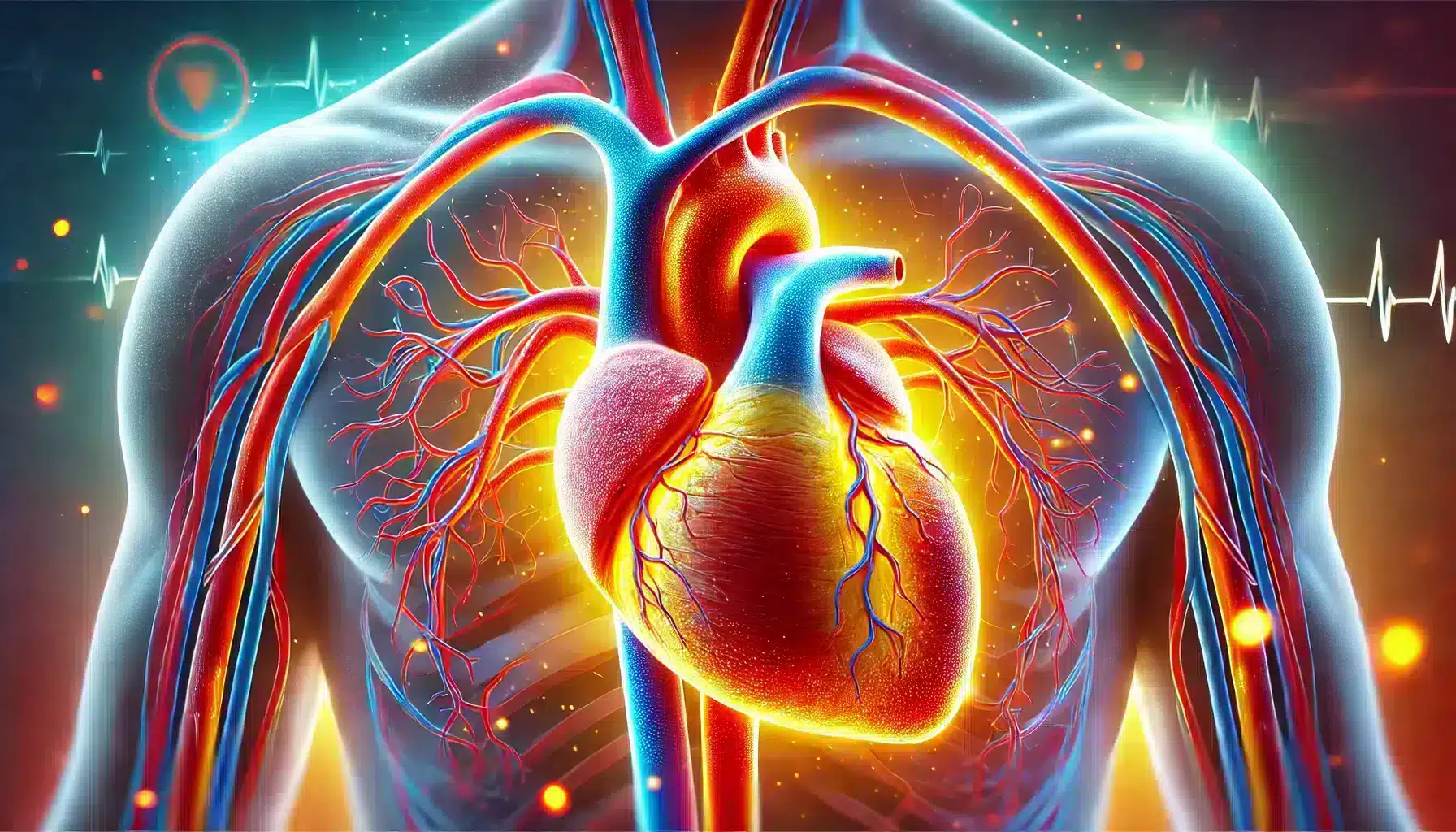Introduction to Smoking and Heart Health
Smoking is one of the most significant preventable causes of health issues worldwide. Among the many organs affected by smoking, the heart and blood vessels, particularly the coronary arteries, are extremely vulnerable. The coronary arteries supply the heart muscle with oxygen-rich blood, and any damage to these arteries can severely impact heart health. In this article, we will explore how smoking affects coronary artery health, the mechanisms behind this damage, and why quitting smoking is critical for maintaining a healthy heart.
Understanding the impact of smoking on heart health is crucial for both current smokers and those who have successfully quit but want to continue supporting their cardiovascular health. Coronary artery disease (CAD) is a leading cause of death globally, and smoking is a major risk factor. However, many are unaware of the specific ways smoking harms the coronary arteries, making education on this topic essential for prevention and recovery.
The Anatomy of Coronary Arteries
To fully understand how smoking affects the coronary arteries, it is essential to first grasp their basic structure and function. The coronary arteries are a network of blood vessels that wrap around the outside of the heart, supplying it with the oxygen and nutrients it needs to function properly. There are two primary coronary arteries: the left and the right coronary arteries, which branch into smaller vessels that penetrate the heart muscle.

These arteries are critical for maintaining heart health. When the coronary arteries are healthy, blood flows easily through them, delivering vital oxygen to the heart tissue. However, any form of damage, such as plaque buildup or inflammation, can restrict this blood flow, leading to conditions like coronary artery disease (CAD). Smoking is one of the major contributors to such damage, as it directly harms the artery walls and accelerates the development of heart disease.
How Smoking Harms Coronary Arteries
Smoking introduces numerous toxic chemicals into the body, many of which directly damage the coronary arteries. One of the first effects of smoking is the inflammation of the blood vessel walls. This inflammation makes the arteries more prone to atherosclerosis, a condition where fatty deposits, or plaque, build up inside the arteries, causing them to harden and narrow. Over time, this reduces the flow of blood and oxygen to the heart, increasing the risk of a heart attack.
In addition to causing plaque buildup, smoking weakens the integrity of the coronary artery walls. The toxins in cigarette smoke damage the endothelial cells that line the arteries, impairing their ability to regulate blood flow and repair themselves. This damage also triggers the production of harmful substances like free radicals, which accelerate the process of atherosclerosis and further compromise the coronary arteries.
The Chemistry of Smoking and Its Impact
Smoking introduces a complex mix of chemicals into the body, many of which have direct and harmful effects on coronary artery health. Some of the most dangerous chemicals found in cigarette smoke include nicotine, carbon monoxide, and various free radicals. These substances not only contribute to the formation of plaque in the arteries but also increase the risk of blood clots and inflammation, all of which can severely damage the coronary arteries and impair heart function.
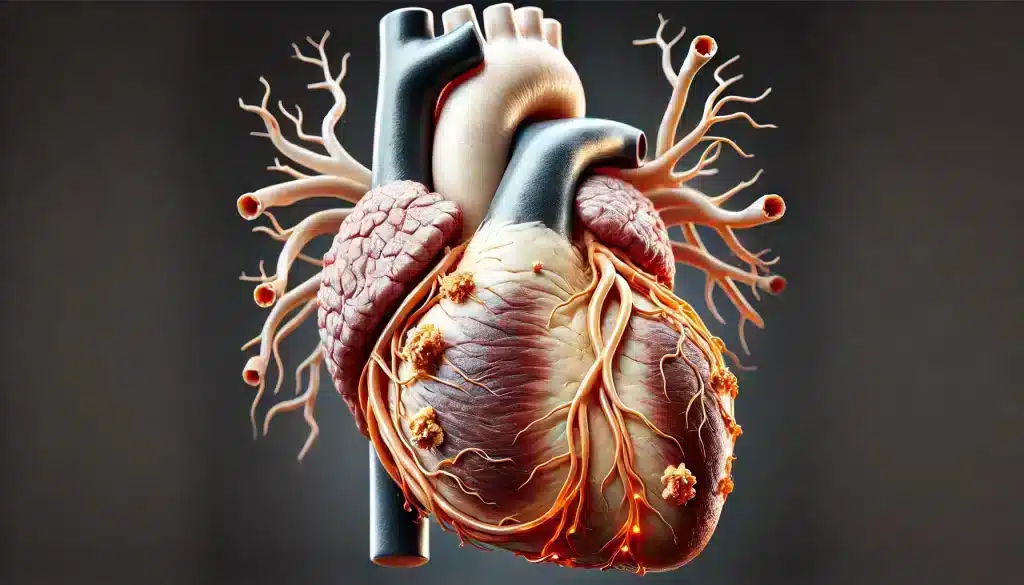
The cardiovascular system is highly sensitive to the presence of these toxic chemicals, especially in the delicate network of coronary arteries. As these chemicals enter the bloodstream, they begin a chain reaction of negative effects that weaken the arteries and make them more vulnerable to disease.
Nicotine and Its Effects
Nicotine is one of the most addictive components of cigarette smoke, and its effects on the coronary arteries are profound. Nicotine stimulates the release of adrenaline, a hormone that causes an increase in heart rate and blood pressure. This additional strain on the heart forces it to work harder, increasing the demand for oxygen while simultaneously reducing the amount of oxygen the heart receives due to the narrowing of the coronary arteries.
Nicotine also causes blood vessels to constrict, a condition known as vasoconstriction. When the coronary arteries are constricted, less blood can flow through them, which deprives the heart muscle of the oxygen and nutrients it needs to function efficiently. Over time, this constant strain can lead to damage in the artery walls, making them more susceptible to plaque buildup and other forms of cardiovascular disease.
Carbon Monoxide’s Role in Artery Damage
Another dangerous chemical in cigarette smoke is carbon monoxide. When inhaled, carbon monoxide binds to hemoglobin in the blood, reducing the amount of oxygen that can be transported to the heart and other vital organs. This lack of oxygen can put a significant strain on the heart, especially during physical activity when the demand for oxygen increases.
Carbon monoxide also contributes to the damage of the coronary arteries by promoting the formation of plaque. It does so by increasing the levels of cholesterol in the blood and accelerating the oxidation of low-density lipoprotein (LDL) cholesterol. Oxidized LDL is more likely to stick to the walls of the arteries, where it can form plaques that narrow and harden the arteries over time, leading to a higher risk of heart attacks and other coronary events.
Long-Term Effects of Smoking on the Coronary Arteries
Smoking has severe long-term consequences for coronary artery health. Over the years, the continuous exposure to harmful chemicals from cigarette smoke leads to irreversible damage to the coronary arteries, which significantly increases the risk of developing coronary artery disease (CAD). This damage is compounded by the long-term effects of high blood pressure, inflammation, and plaque buildup, all of which can culminate in life-threatening conditions such as heart attacks or strokes.
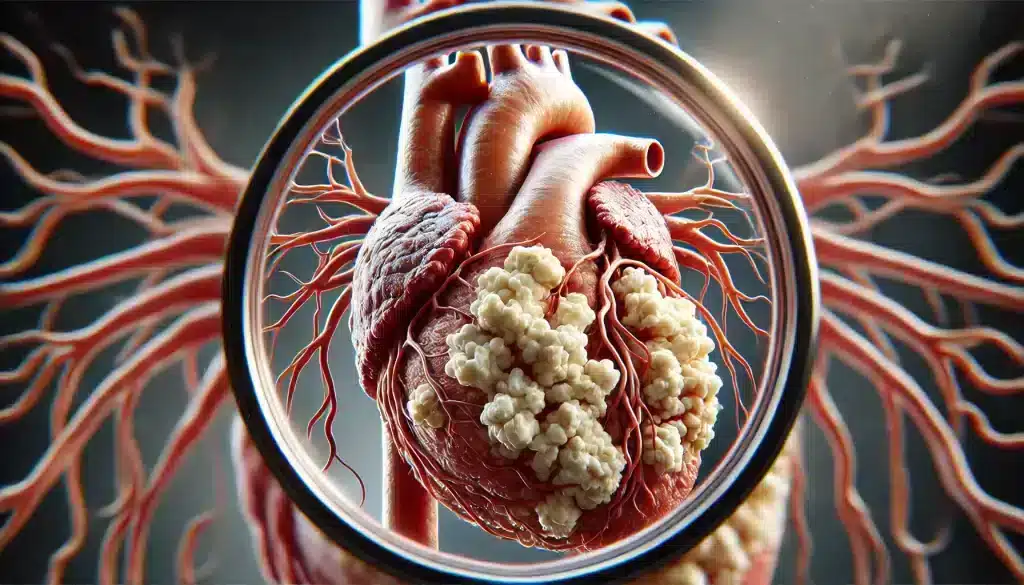
The long-term effects of smoking also extend beyond the coronary arteries to the entire cardiovascular system. While some of the damage may be reversible if an individual quits smoking early enough, prolonged smoking typically results in permanent harm, which is why early intervention is crucial for minimizing the long-term impacts on heart health.
Plaque Buildup and Atherosclerosis
Atherosclerosis, or the buildup of plaque inside the arteries, is one of the most dangerous long-term effects of smoking. As plaque accumulates over time, it narrows the arteries and restricts blood flow to the heart muscle. This reduced blood flow leads to angina, a type of chest pain that occurs when the heart doesn’t receive enough oxygen.
Plaque buildup is particularly dangerous because it can rupture, leading to the formation of blood clots. If a clot forms and blocks a coronary artery, it can cause a heart attack. Smokers are at a much higher risk of plaque rupture due to the damage that smoking causes to the endothelial cells lining the arteries. This makes atherosclerosis one of the primary mechanisms by which smoking leads to coronary artery disease.
Risk of Heart Attack and Stroke
The risk of heart attack and stroke is dramatically higher in smokers compared to non-smokers. Smoking not only contributes to plaque formation but also makes the blood more likely to clot. This is due to the increased levels of fibrinogen and platelets in smokers, which heightens the risk of clots forming in narrowed arteries.
A heart attack occurs when a clot blocks a coronary artery, preventing oxygen from reaching part of the heart muscle. If the blockage isn’t quickly removed, the affected part of the heart muscle begins to die, leading to permanent damage or death. Similarly, if a clot blocks blood flow to the brain, a stroke occurs, which can lead to long-term disability or death. The combination of narrowed arteries and an increased likelihood of clot formation makes smoking a major risk factor for both heart attacks and strokes.
Smoking and Other Risk Factors for Coronary Artery Disease
While smoking alone significantly increases the risk of coronary artery disease (CAD), its effects are even more dangerous when combined with other risk factors. These include high blood pressure, high cholesterol, diabetes, obesity, and a sedentary lifestyle. Each of these factors independently contributes to the weakening and damage of the coronary arteries, but smoking accelerates the progression of these conditions, making it a particularly dangerous combination.
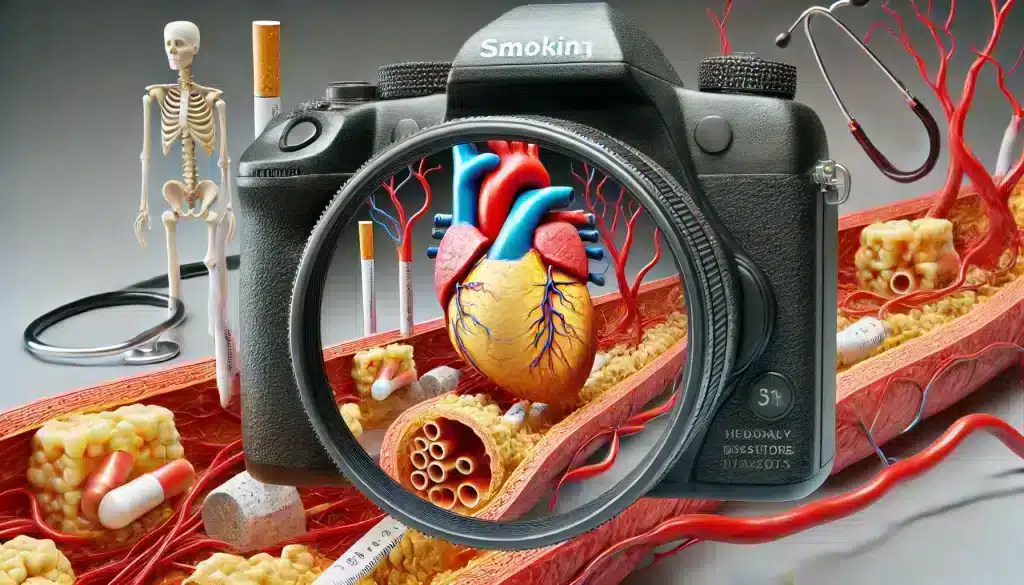
For individuals who already have a genetic predisposition to heart disease or are dealing with other health conditions that affect the cardiovascular system, smoking can be a tipping point. The damage caused by smoking, along with the presence of other risk factors, often leads to earlier onset and more severe forms of coronary artery disease, increasing the likelihood of serious cardiovascular events such as heart attacks or strokes.
How Smoking Interacts with High Blood Pressure
High blood pressure, also known as hypertension, is one of the leading causes of coronary artery disease, and smoking exacerbates its effects. Smoking increases heart rate and narrows blood vessels, which causes blood pressure to rise. Over time, the combined effect of smoking and high blood pressure places additional strain on the heart and blood vessels, accelerating the damage to the coronary arteries.
Hypertension weakens the artery walls, making them more susceptible to atherosclerosis and plaque formation. When combined with smoking, the damage to the coronary arteries is amplified, significantly increasing the risk of a heart attack or stroke. Quitting smoking is one of the most effective ways to reduce the negative effects of high blood pressure and improve overall heart health.
Diabetes, Obesity, and Smoking: A Dangerous Combination
Individuals with diabetes and obesity are already at an increased risk of developing coronary artery disease. Smoking, when combined with these conditions, creates a particularly dangerous scenario. Diabetes damages the blood vessels, making it harder for the coronary arteries to function properly, and smoking compounds this damage by further impairing blood flow and increasing inflammation.
Obesity also contributes to the development of coronary artery disease by increasing cholesterol levels and promoting the formation of fatty deposits in the arteries. Smoking, in turn, accelerates the oxidation of LDL cholesterol, leading to faster plaque buildup. The combination of smoking, diabetes, and obesity dramatically increases the risk of serious cardiovascular events and underscores the importance of quitting smoking for individuals with these risk factors.
Quitting Smoking: How It Affects Coronary Artery Recovery
Quitting smoking is one of the most important steps anyone can take to protect their heart and improve coronary artery health. Although the damage caused by smoking is significant, the body has a remarkable ability to heal once smoking stops. The coronary arteries, in particular, can recover to some extent, especially if smoking cessation occurs early enough. Quitting smoking not only reduces the risk of further damage but also decreases the likelihood of developing coronary artery disease (CAD) and suffering from heart attacks or strokes.
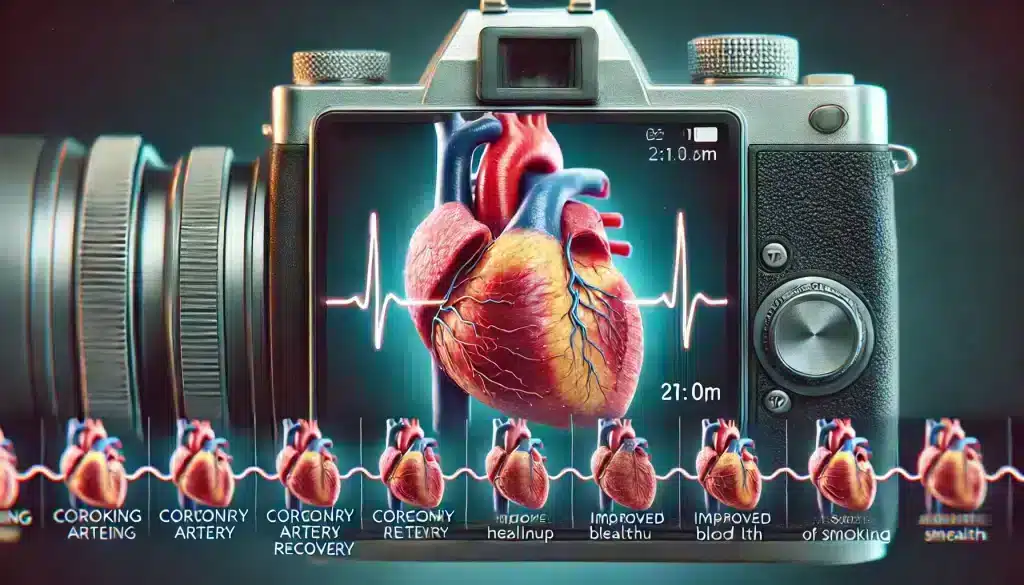
For long-term smokers, the recovery process may take time, and some damage to the coronary arteries may be permanent. However, even in these cases, quitting smoking significantly reduces the risk of serious cardiovascular events and slows the progression of coronary artery disease. The sooner a person quits smoking, the better the outcome for their heart health.
Timeline of Health Benefits After Quitting Smoking
The health benefits of quitting smoking begin almost immediately, and the positive effects on coronary artery health become more pronounced over time. Within 20 minutes of quitting, blood pressure and heart rate start to normalize. After 12 hours, the level of carbon monoxide in the blood drops, allowing oxygen levels to return to normal.
Within weeks, circulation improves, and lung function increases, reducing the strain on the heart. After one year of not smoking, the risk of coronary artery disease drops by 50%. After 15 years, the risk of coronary artery disease is similar to that of a non-smoker, highlighting the remarkable ability of the coronary arteries to recover from the damage caused by smoking.
Tips for Quitting Smoking and Supporting Heart Health
Quitting smoking can be challenging, but the benefits to heart health are worth the effort. Some effective strategies for quitting include seeking support from healthcare professionals, using nicotine replacement therapies, and making lifestyle changes such as incorporating regular physical activity and a heart-healthy diet. These changes not only make it easier to quit smoking but also help repair some of the damage smoking has caused to the coronary arteries.
For those struggling to quit, joining a support group or finding a quit-smoking program can provide encouragement and accountability. Additionally, focusing on the long-term health benefits, such as reduced risk of heart attacks and improved coronary artery health, can serve as a strong motivator to stay smoke-free.
How does smoking cause coronary artery disease?
Smoking causes coronary artery disease by damaging the lining of the arteries, leading to the buildup of plaque (atherosclerosis). The chemicals in cigarette smoke, such as nicotine and carbon monoxide, contribute to inflammation and the narrowing of the arteries, which restricts blood flow to the heart.
Can quitting smoking reverse coronary artery damage?
Quitting smoking can help reverse some of the damage to the coronary arteries, particularly if smoking cessation occurs early. Over time, the risk of coronary artery disease decreases, and blood vessels begin to heal, although some damage may be permanent depending on how long a person smoked.
How long does it take for heart health to improve after quitting smoking?
Heart health begins to improve almost immediately after quitting smoking. Within 20 minutes, blood pressure and heart rate normalize. After one year, the risk of coronary artery disease is reduced by half, and after 15 years, the risk is similar to that of a non-smoker.
Does secondhand smoke affect coronary artery health?
Yes, secondhand smoke can damage coronary artery health by exposing individuals to the same harmful chemicals found in cigarette smoke. Non-smokers who are regularly exposed to secondhand smoke have an increased risk of developing coronary artery disease.
What are the best ways to quit smoking to protect coronary artery health?
The best ways to quit smoking include using nicotine replacement therapies, seeking professional help, joining support groups, and making lifestyle changes such as exercising regularly and eating a heart-healthy diet.




